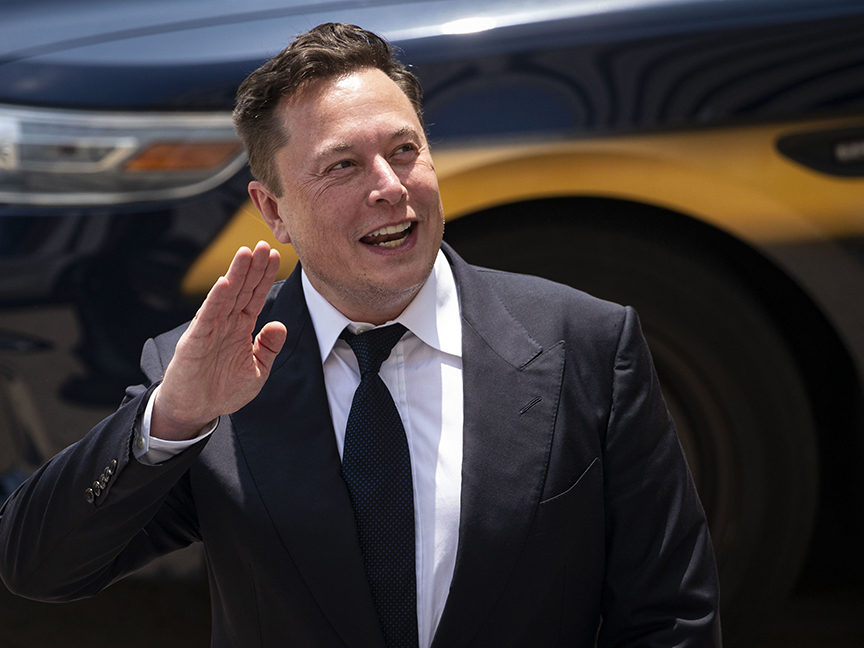
Visit Our Sponsors |
|
|
|
|
|
|
|
|
|
|
|
|
|
|
|
|
|
|
|
|
|
|
|
|
|
|
|
|
|
|
|
|
|
|
|
|
|
|
|
|
|
|
|
|
|
|
|
|
|
|
|
|
|
|
|
|
|
|
|

Elon Musk says Tesla Inc.’s Shanghai factory is “back with a vengeance” after a three-week Covid-induced shutdown. But his bullishness belies concern the plant has only enough components to last about a week even at reduced capacity, highlighting the challenges snarled supply chains pose to manufacturers.
Production at many suppliers in neighboring Jiangsu province is still suspended and there are difficulties in transporting parts, Tesla’s China operations team said earlier this week. Hundreds of thousands of truckers have been caught in COVID-19 quarantine controls, hampering the delivery of everything from auto parts to fresh food.
The factory’s manufacturing and operations director told a state-run media outlet this week that the plant has only enough inventory for a week’s production. In the meantime, the electric-car maker is coordinating with more than 100 suppliers to resume production with the help of relevant government departments, state-owned Xinhua reported.
Tesla has called back around 8,000 staff to enter a so-called closed-loop system where they live and work on site, with regular Covid testing. They will work 12-hour shifts, six days a week, Bloomberg News reported earlier this week. Before Shanghai was plunged into lockdown on March 28, Tesla had around 15,000 workers keeping the plant running around the clock.
On an earnings call in the U.S. on Wednesday, Tesla Chief Financial Officer Zach Kirkhorn said the automaker lost “about a month” of build volume during the Shanghai shutdown.
With an estimated run rate of about 2,100 cars a day, Tesla lost around 45,000 units of production during the three-week long shutdown, according to Bloomberg calculations.
Musk said on the call that the Shanghai factory is back in production at “fairly high levels,” without being specific.
While reporting better-than-expected results, Tesla warned of supply chain challenges for the rest of the year and higher prices for key components.
“Our own factories have been running below capacity for several quarters as supply chain became the main limiting factor, which is likely to continue through the rest of 2022,” Tesla said in a letter to shareholders.
However, Musk said Tesla should be able to make up for any production shortfalls and is on track to expand output to more than 1.5 million vehicles this year. It delivered about 936,000 cars in 2021. “We may pull a rabbit out of the hat,” he said on the call. “Q3 and Q4 will be substantially higher.”
Tesla’s “recovery schedule is dynamic, depending on epidemic control, suppliers’ resumption, and logistics improvements,” said Ming-chi Kuo, a Hong Kong-based analyst at TF International Securities. That makes it hard to predict precisely when production will return to pre-lockdown state levels. The best case would be mid-May “if everything goes well,” he said.
Chinese EV maker Li Auto Inc. said Thursday some deliveries will be delayed because it can’t get parts from Jiangsu, Zhejiang or Shanghai.
The supply shortage shows even companies operating under closed-loop systems may struggle to run at full capacity or might even face further shutdowns, delaying a return to normalcy and dragging on the economy.
Read more: Shanghai Factory Restarts Fall Short on Lack of Parts, Truckers
One major pinch point is cross-provincial road transport and an array of local health requirements and restrictions. Truckers wanting to move between Shanghai and Jiangsu province are having to typically wait between two and three hours each time to undertake Covid tests, according to Taipei-based air and ocean freight forwarder and logistics specialist Dimerco Express Corp.
RELATED CONTENT
RELATED VIDEOS
Timely, incisive articles delivered directly to your inbox.


